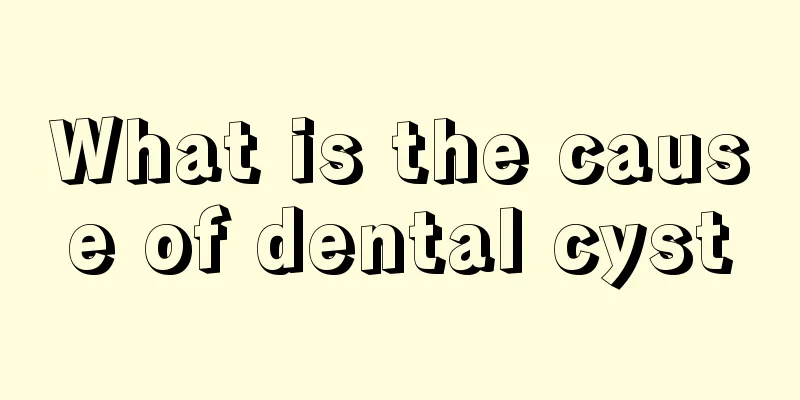What is the cause of dental cyst

|
Dental cysts are often caused by cystic degeneration of the stellate reticular layer of the enamel organ, and this disease often occurs in young people. In this case, it is recommended that patients first undergo some dental examinations to confirm the cause of the disease and then take treatment measures according to their own situation. 1. Dentigerous cyst develops from normal dental follicles during tooth development. It is caused by cystic degeneration of the stellate reticular layer of the enamel organ, and the fluid around the dental follicles infiltrates between the crown and the epithelium. It is more common in young patients. It occurs more frequently in the mandible than in the maxilla. 2. Periodontal cysts and dentigerous cysts grow slowly, but they can continue to grow and compress the maxillary sinus bone, causing it to become thinner and displaced, or they can grow directly into the maxillary sinus. A huge cyst can destroy the walls of the maxillary sinus and cause bulges in the cheeks, oral vestibule, hard palate and alveolar process. The tension can cause the eyeball to shift upward and outward, or expand into the nasal cavity and cause nasal congestion. When there is no infection, there is often no typical local pain. 3. Clinical diagnosis can be made based on the results of dental examination, maxillary sinus puncture, X-ray (sinus radiography - plain film or injection of contrast agent into the cyst cavity), etc. If there is a bulge in the cheek or oral vestibule, palpation may reveal that there is a smooth and elastic lump underneath, like the feeling of pressing a ping-pong ball or a broken eggshell. 4. Periodontal cysts are more common in older people. They can be single or multiple, and are more common at the roots of lateral incisors. The contents of the cyst are thin and transparent, and some are turmeric or sauce-colored liquids containing cholesterol. 5. Dentigerous cysts occur in younger people and are most common as single cysts. It often occurs on incisors and upper third molars, but can also occur on supernumerary teeth. The contents of the cyst are clear, dark brown or brown liquid containing cholesterol. On X-rays, the shadow of a periodontal cyst shows that the root of the diseased tooth protrudes into the cyst cavity. On the film of the dental cyst, it can be seen that there is a single or several complete teeth or crowns in the cyst, the position of which is not fixed, and the crowns protrude into the cyst cavity. |
<<: What are the symptoms of ophthalmoplegia
>>: How to whiten a dark complexion?
Recommend
Do you know the cause of kidney cancer?
Among kidney diseases, kidney cancer is also a re...
How to treat right ovarian tumor
The treatment plan for right ovarian tumors needs...
What are the diagnostic methods for laryngeal cancer?
In recent years, laryngeal cancer has become a ma...
Symptoms and treatment of gallbladder polyps
The problem of gallbladder polyps seriously affec...
Can uterine cancer be transmitted to sexual partners?
Many people are very curious about whether uterin...
What are the dangers of brain cancer
Brain cancer is very harmful to our body. We all ...
How long can you live with endometrial cancer in the late stage? The cure rate is about 70%
The survival rate of endometrial cancer patients ...
Medication treatment for patients with bladder cancer bedsores
Bladder cancer patients who are bedridden for a l...
What are the dangers of blocked thigh meridians
Body functions are very important to the human bo...
What should adults do if they have eczema?
Anyone who has had eczema may know that eczema do...
Is prostate cancer life-threatening?
Prostate cancer is life-threatening, especially w...
Is it useful to take anti-inflammatory drugs for mouth ulcers
I believe that everyone has had mouth ulcers befo...
What are the fertility enhancement methods and which ones are most effective?
In recent years, the fertility of young people in...
There are red spots on the skin of the calves
The appearance of red spots on the skin of the ca...
What to do if eyebrows turn white? 7 ways to restore your eyebrows to black
Whitening of eyebrows is a sign of vitiligo, so i...









